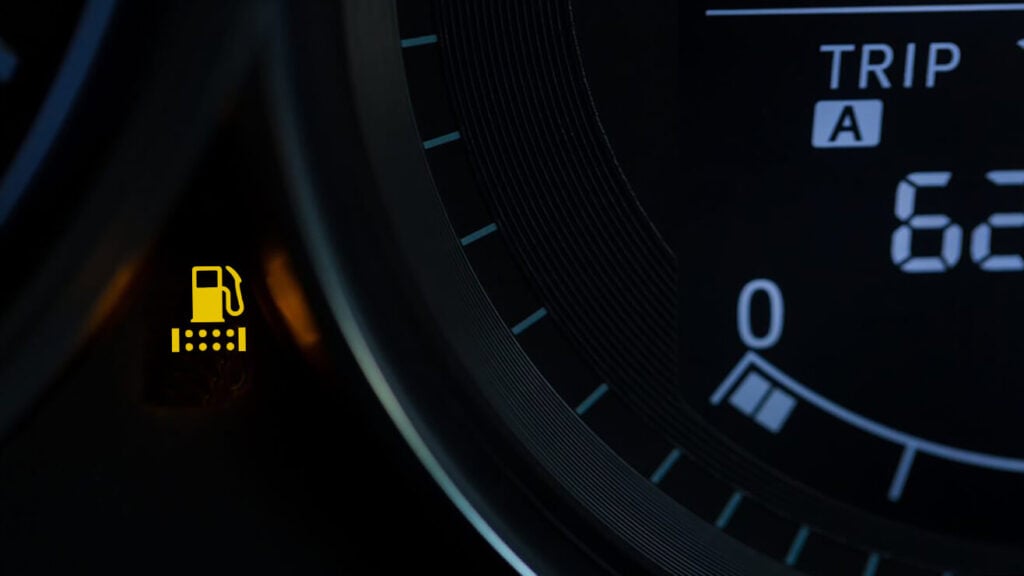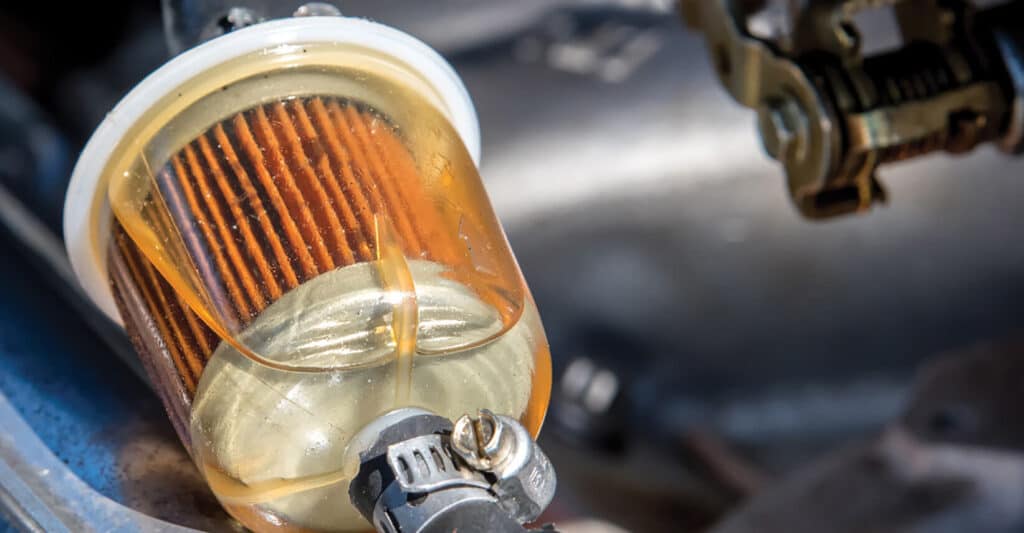Navigating the Maze of Modern Car Warning Lights—The Importance of the Fuel Filter Warning Light
Dashboard lights are like the car’s way of talking to you. With the flicker of a light, your vehicle conveys crucial information about its health and functionality. Specifically, the fuel filter warning light is one you shouldn’t ignore. It’s not just a sign; it’s an invitation to action. Its illumination is a direct signal from your car to you about the fuel system, and it often demands immediate attention.
Decoding the Dashboard: What Does the Fuel Filter Warning Light Mean?
So, you’re cruising down the highway, belting out to your favorite tunes, when suddenly, a mysterious light flashes on your dashboard. Shaped like a gas pump and glowing in a rather noticeable hue, it’s your fuel filter warning light making its debut appearance. But what does it mean? Think of this light as a signal flare your car is sending up. Its primary job is to tell you that something is going awry within your fuel system. Depending on the color, the light can convey different levels of urgency.
When this warning symbol lights up orange, it’s like your car gently tapping you on the shoulder, whispering, “We should look into this, but no rush.” It’s a preliminary caution, perhaps triggered by a minor clog or other non-urgent issue in the fuel filter. However, if that light turns yellow, it’s the automotive equivalent of your car shaking you and yelling, “Listen up! We’ve got a problem!” A yellow light typically indicates a more serious issue within your fuel system, which could include a significantly clogged or damaged fuel filter. In both cases, this isn’t something you should ignore. An orange light is an early sign, giving you time to plan your next move. A yellow light, however, is a clarion call for immediate action. Either way, the moment you see this light illuminate, make it a priority to get your fuel system checked out.

Red Alert or False Alarm: What Triggers the Fuel Filter Warning Light?
• Minor Clogs and Contaminants: Often, the warning light could simply be an indication of a minor clog in the fuel filter. It could be triggered by contaminants like dust, rust, or other particles that get mixed with the fuel.
• Irregular Fuel Flow: Another common reason for the light to go on is an issue with the fuel flow. If the fuel isn’t flowing through the filter as it should, due to a blockage or wear and tear, this could activate the warning system.
• Sensory Errors: Sometimes, the warning light could be a result of a malfunctioning sensor rather than a genuine problem with the fuel filter. Sensors can wear out or get damaged, sending false alarms that can confuse drivers.
• Associated Codes: When the warning light illuminates, it often comes with a diagnostic trouble code (DTC). These codes can be read using a code reader and can provide specific insights into what might be going wrong. It’s your car’s way of speaking in Morse code, giving you clues on how to fix the issue.
• Fuel Quality: Poor quality or contaminated fuel can also trigger the light. The filter’s job is to clean the fuel before it reaches the engine; if it can’t do this effectively because of the fuel quality, the light might come on.
• Age of the Fuel Filter: Just like any other part, the fuel filter has a shelf-life. If it’s reached the end of its lifespan, the warning light might illuminate as a reminder for its upcoming retirement and replacement.
Understanding these triggers can help you navigate the initial moments of panic when the warning light turns on. Instead of dismissing it or fretting endlessly, you can take targeted action based on the likely cause.
To Drive or Not to Drive: Safety Concerns When the Warning Light Is On
Driving with a fuel filter warning light on is a bit like tightrope walking without a safety net. Yes, you can continue to drive, but that doesn’t mean you should. When this particular light illuminates, it’s indicating that there might be a clog or other issue in your fuel system. This can lead to decreased performance, reduced fuel efficiency, and even engine damage if left unaddressed. So while your vehicle might still rumble along, you’re essentially rolling the dice with every kilometer. The best course of action? Make plans to address the issue as soon as possible. A few hours of preventative maintenance can save you from a much more time-consuming and costly repair job down the line.
The Gas Gauge Game: How Much Fuel is Really Left?
Now, let’s clear up a common misconception: the fuel filter warning light is not an indicator of how much fuel remains in your tank. That’s a job for your fuel gauge. The fuel filter warning light is a sentinel, alerting you to potential issues in your fuel system that could affect performance or even lead to damage. But let’s talk about that fuel gauge for a second. With modern sensor technologies, the fuel gauge is quite accurate and gives you a fairly reliable idea of how much gas you’ve got left. So if that fuel gauge light does come on, you can generally trust that it’s time to refill, and not confuse it with the fuel filter warning light, which is an entirely different can of worms.
Diagnostic and Repair Pathways: Potential Repairs and Cost Estimates
• Basic Fuel Filter Replacement: The most straightforward repair is often replacing the fuel filter itself. The part can be relatively inexpensive, usually in the range of $20 to $50, with labor adding another $30 to $50. This brings the total estimated cost to roughly $50 to $100.
• Extensive Diagnostics: If the issue is not clear-cut or involves multiple parts of the fuel system, a thorough diagnostic test may be necessary. These tests can add an additional $100 to $200 to your bill.
• Additional Repairs: In more severe cases, you might be looking at replacing other parts like fuel pumps or injectors. This could quickly escalate the cost to several hundred dollars.
• Variable Costs: Keep in mind that labor costs can vary by location and the make and model of your car. Always ask for an estimate upfront to avoid unexpected costs.

Proactive Measures: How to Prevent Future Fuel Filter Issues
• Scheduled Maintenance: One of the best preventive measures is adhering to your car’s recommended maintenance schedule. Check your owner’s manual for guidelines on when to replace the fuel filter; typically, it’s every 30,000 to 50,000 km.
• Quality Fuel: Opt for high-quality fuel; low-quality fuel can have impurities that may clog the filter faster.
• Regular Check-Ups: In between scheduled maintenance, consider having a quick check of your fuel system during regular oil changes or other maintenance activities.
• Warning Signs: Be attentive to warning signs like decreased fuel efficiency, sluggish acceleration, or difficulty in starting the car, as these might indicate a need for preventive maintenance.
Conclusion: Fueling Your Knowledge—Why Ignoring the Warning Light Is a Road to Nowhere
Ignoring the fuel filter warning light is a pitfall you don’t want to step into. Your car is a complex machine, and like any machine, it needs regular check-ups and timely interventions. Now, if you find yourself dreading a trip to the mechanic, consider Uchanics. As a Canada-based mobile mechanic service, they bring the garage to you, offering convenient and efficient solutions for all your car troubles.
And there you have it. Your roadmap to decoding, diagnosing, and dealing with the fuel filter warning light. Stay enlightened and drive safe!
